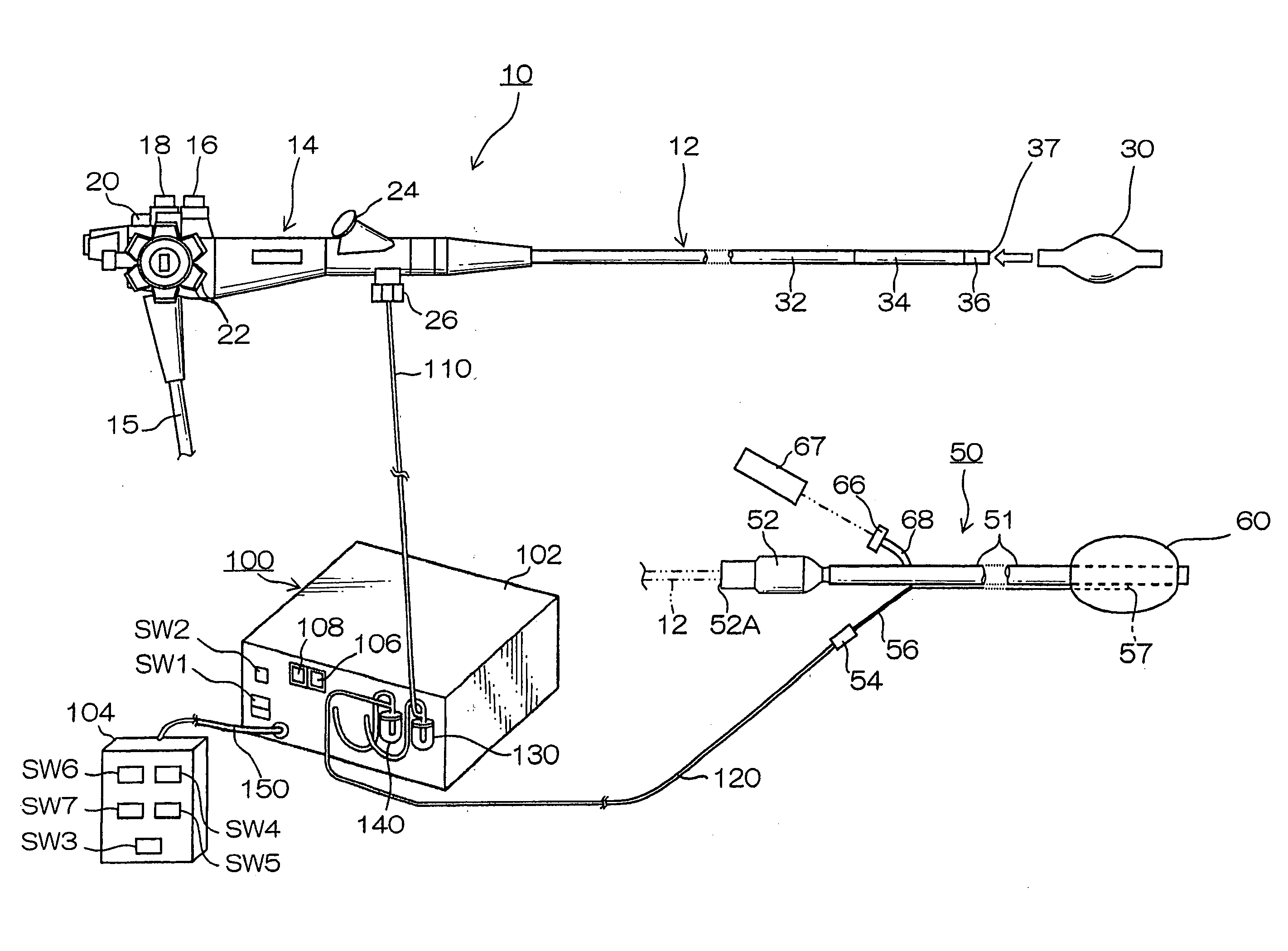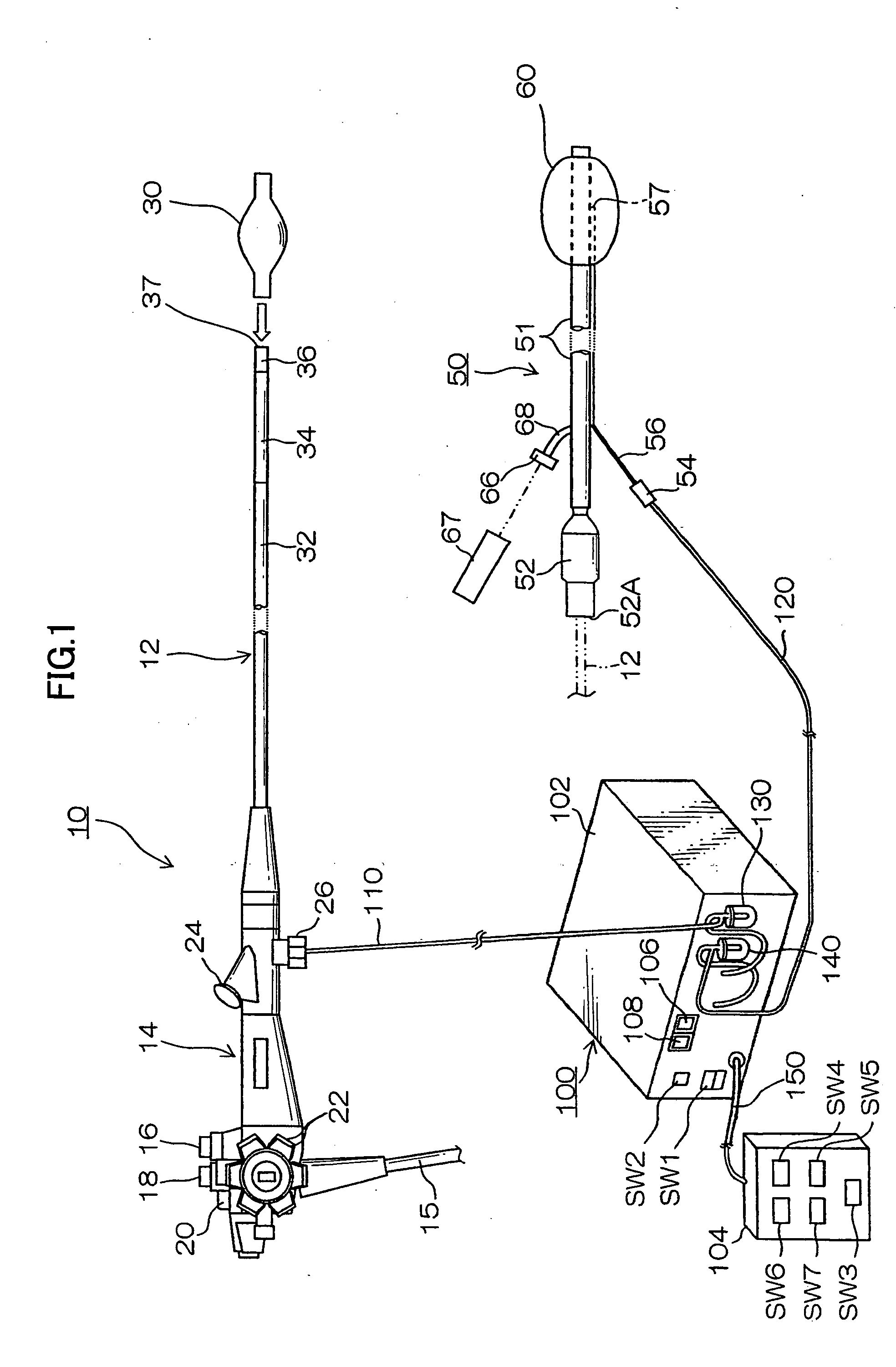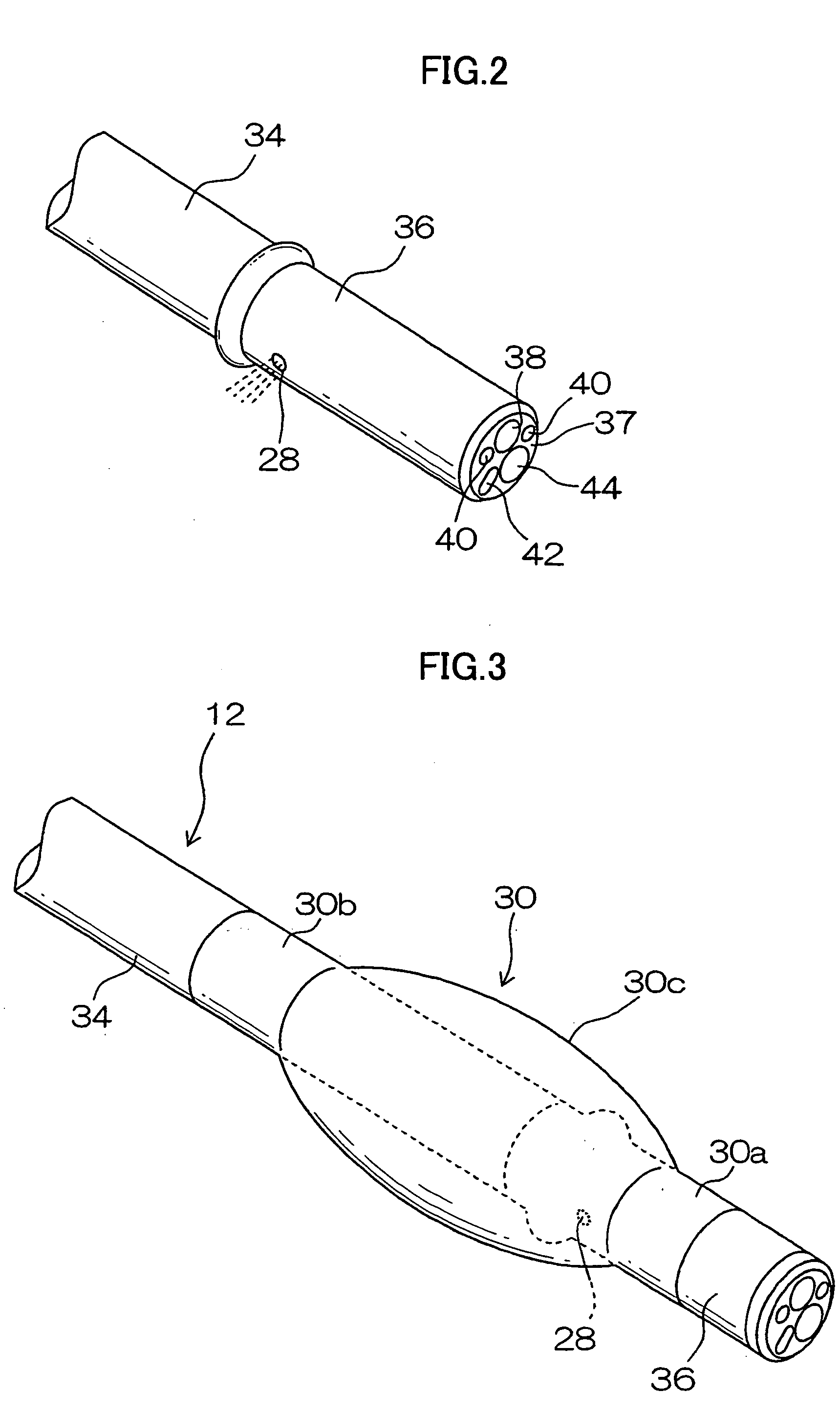[0008] The present invention has been made in view of such circumstances and has as its object the provision of an endoscope apparatus that improves the
lubricity by a lubricating liquid and the insertion and extraction
operability of the insertion portion of an endoscope by setting the gap between the insertion aid and the insertion portion of an endoscope at an optimum value.
[0010] According to the first aspect, because an one-side gap between the insertion aid and the insertion portion of the endoscope is set at not less than 0.5 mm, a lubricating liquid such as water is sufficiently supplied to the gap and hence
lubricity can be improved. Also, because the one-side gap is set at not more than 1.5 mm, the snaking of the insertion portion of the endoscope with respect to the insertion aid can be held to a minimum and hence the insertion and extraction
operability of the insertion portion of the endoscope can be improved.
[0013] Because in such an endoscope apparatus, an one-side gap between the insertion aid and the insertion portion of the endoscope is are at not less than 0.5 mm, a lubricating liquid such as water is sufficiently supplied to this gap and hence
lubricity is improved. Also, because the one-side gap is set at not more than 1.5 mm, the snaking of the insertion portion of the endoscope with respect to the insertion aid can be held to a minimum and hence the insertion and extraction operability of the insertion portion of the endoscope can be improved.
[0014] Incidentally, in a treatment with the aid of an endoscope apparatus in which an insertion aid is used, there is a case where after the insertion of the insertion aid and the insertion portion of the endoscope into an aimed part within a
body cavity, operative instruments, such as a
balloon dilator that dilates the narrow areas of the intestinal tract and a
contrast medium tube that injects a
contrast medium for observing narrow areas of the intestinal tract are inserted to perform a desired treatment. In this case, it is conceivable that only the insertion portion of the endoscope is extracted, with the insertion aid kept remaining in the body cavity, and that these operative instruments are inserted by using the insertion aid as a guide. Accordingly, it becomes necessary that in an endoscope apparatus of the
balloon type, a balloon which has been deflated be removed via a gap between the insertion aid and the insertion portion of the endoscope. However, the thickness of a balloon made of
natural rubber is as small as about 0.1 mm and the thickness of creases formed by the deflation of the balloon is also about 0.3 mm. Therefore, because in an endoscope apparatus of the present invention in which the one-side gap is set at not less than 0.5 mm, the balloon can be extracted without resistance, the insertion portion of the endoscope can be extracted from the insertion aid without problems.
[0016] Because this lubricating liquid is used to lessen
load resistance between the insertion portion of the endoscope and the insertion aid, it is unnecessary to constantly supply the lubricating liquid from the lubricating liquid supply device. For this reason,
load resistance between the insertion portion of the endoscope and the insertion aid is measured with the sensor and the lubricating liquid supply device performs the supply of the lubricating liquid when a measured
load resistance value exceeds a prescribed value. As a result of this, the lubricating liquid can be saved because useless supply of the lubricating liquid can be prevented. Also, because relative insertion and extraction resistance of the insertion portion of the endoscope and the insertion aid becomes almost constant, stable operative treatment becomes possible.
[0017] According to an endoscope apparatus related to the present invention, the one-side gap between the insertion aid and the insertion portion of the endoscope is set at not less than 0.5 mm and, therefore, a lubricating liquid such as water is sufficiently supplied to the above-described gap, resulting in improved lubricity. Also, because the one-side gap is set at not more than 1.5 mm, the snaking of the insertion portion of the endoscope with respect to the insertion aid can be held to a minimum and hence the insertion and extraction operability of the insertion portion of the endoscope can be improved.
 Login to View More
Login to View More  Login to View More
Login to View More 


